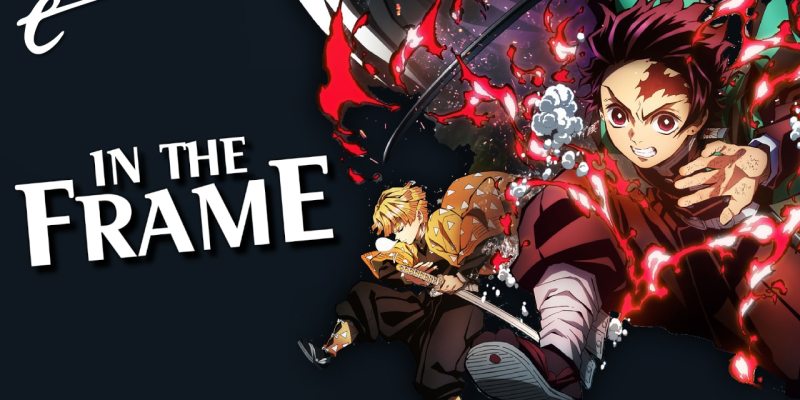Demon Slayer: Mugen Train was officially the highest-grossing movie of 2020. It also represents a changing of the guard.
That box office title comes with some qualifications. After all, 2020 was an atypical year in many respects. However, this arguably makes the film’s box office success more significant. Mugen Train was the first film to gross over ¥10B in 10 days at the Japanese box office. It outgrossed Titanic at the Japanese box office in 45 days. It became the highest-grossing film of all time at the Japanese box office in 72 days. Its home media release sold over a million copies in just three days.
It is not just Japan. Mugen Train is a global phenomenon. Mugen Train is the first non-American film to be the highest-grossing movie of its year at the worldwide box office. Even during a global pandemic, Mugen Train enjoyed the biggest opening of a foreign-language film of any kind at the American box office. It beat Mortal Kombat in its second weekend, and it is the first anime film to top the American box office since Pokémon: The First Movie over two decades ago.
Mugen Train is a cinematic adaptation of the hit anime series Demon Slayer. The anime series is itself adapted from a manga published in the famous Weekly Shōnen Jump magazine. The manga was so popular that some stores reportedly instituted lotteries to assign new copies of the magazine, and others had to hide their copies from thieves and shoplifters. The anime has been referenced by Prime Minister Yoshihide Suga and astronaut Soichi Noguchi.

Cinematic adaptations of popular anime series like My Hero Academia, Naruto, and Dragon Ball have largely tended to tell self-contained adventures, treating these stories as optional extras within the larger sagas. In contrast, Mugen Train is densely tied to the continuity of the anime. The film essentially serves as a bridging arc between the show’s 26-episode opening season and its rapidly approaching second season.
Mugen Train is not a film that welcomes casual viewers. In his review for IndieWire, critic David Ehrlich observed, “For a movie that’s on rails from start to finish, it’s almost impressive how fast Mugen Train is able to completely disorient anyone who doesn’t already know where it’s going.” The film assumes an intimate familiarity with its world and its characters and makes no effort to reintroduce those elements for the benefit of an audience unfamiliar with the television series.
To be fair, this is not an unreasonable assumption. Anime has become increasingly popular and accessible to global audiences in recent years, a trend accelerated by the global pandemic. The anime streaming service Crunchyroll reportedly has 4M paid subscribers and over 100M free users. Netflix reports that over 100M subscribers watched at least one anime project between October 2019 and September 2020, explaining the scaling up of the company’s investment in the medium.

The first season of Demon Slayer arrived on American Netflix in January 2021, giving viewers three months to catch up before the theatrical release of Mugen Train. It is no surprise that Demon Slayer is a multimedia franchise success story, launching spin-off stories, video games, stage plays, and even theme park tie-ins. The success of Mugen Train, and by extension the success of the entire Demon Slayer franchise, is a particularly modern sort of success.
Before Mugen Train took the crown, Spirited Away held the title of the highest-grossing movie of all time at the Japanese box office for almost two decades. Spirited Away was the work of veteran animator Hayao Miyazaki and Studio Ghibli. Miyazaki is an institution in Japanese animation, having directed five of the top 25 movies of all time at the Japanese box office: Spirited Away, Princess Mononoke, Howl’s Moving Castle, Ponyo, and The Wind Rises.
Miyazaki is a distinctive and unique filmmaker. In 2005, The New Yorker described Miyazaki as “the auteur of anime.” Much of his work is drawn from intensely personal experiences, with the director musing, “When I say I get inspiration from my real life, I think of my real life as extending about 300 meters radius around me.” Miyazaki’s movies are saturated with themes and ideas of importance to the director, from environmentalism to the journey to adulthood to his love of planes.
Of course, anime extends beyond Hayao Miyazaki. However, much of the anime that has broken out globally comes from creators with strong individual voices. Miyazaki co-founded Studio Ghibli with the late Isao Takahata, whose work on projects like Grave of the Fireflies, My Neighbors the Yamadas, and The Tale of the Princess Kaguya was similarly personal. Miyazaki’s old friend and collaborator Hideaki Anno channeled his own struggles with depression into Neon Genesis Evangelion.

Akira was one of the first major anime films to break out in the United States. It was directed by Katsuhiro Otomo, who adapted his own manga and ensured the film was imbued “with his voice and his passion.” Even more recently, the cultural phenomenon Your Name reflects writer and director Makoto Shinkai’s skill at and interest in “depicting and investigating the distance between people.” No matter their genre trappings or fantastical elements, these are immensely personal works.
In contrast, it is harder to get a read on what Demon Slayer is meaningfully saying beyond the conventions of Shōnen storytelling. Attempts to summarize the appeal of the series often come down to broad platitudes. Professor Ryusuke Hikawa at the Meiji University argues that Demon Slayer is about “the idea that when the fighting ends, you will overcome the hard things in life.” Others read the series as a nostalgic appeal to “traditional values many fear have been forgotten.”
Mugen Train is fixated on the ideal of service and sacrifice, bookended by scenes set in a cemetery housing those who died to protect innocents from demons. Characters monologue about how the demons “can never extinguish the bright embers of a human spirit” in the same vague way that Dom Toretto (Vin Diesel) talks about the importance of “family” in the Fast and Furious franchise. There’s little specificity to any of this, which perhaps makes it easier to sell overseas.
In some ways, Demon Slayer is a literally authorless text. The original manga is credited to Koyoharu Gotouge, who became the first manga author to make the Time 100 list. However, Koyoharu Gotouge does not exist. It is an alias used by the author of the manga, who is reportedly a woman. Much of the publicity for Demon Slayer is conducted by editor Tatsuhiko Katayama. Like other Weekly Shōnen Jump manga, the story was shaped by the “algorithm” of audience feedback.

There is some question about what the success of Demon Slayer and Mugen Train bodes for the future of mainstream global anime. Miyazaki has stated publicly he is not too concerned with Demon Slayer taking his box office crown, telling reporters, “I don’t watch TV, I don’t watch movies. I’m a retired old man picking up trash.” However, his long-time producer Toshio Suzuki has reported that Miyazaki described Demon Slayer as “a rival.”
Observers argue that Demon Slayer signals a sea change for Japanese animation. “The industry is realizing that their job is to deliver a product that now has a global audience,” reflects Japanamerica author Roland Kelts, conceding that a studio insider told him, “Our generation has realized that anime is entertainment; it’s not art.” Given the artfulness of projects like Akira, Neon Genesis Evangelion, Your Name, or the work of Studio Ghibli, this is a chilling assertion.
To be fair, these trends are reflections of broader cultural forces. Avengers: Endgame was the biggest movie of the previous year and (briefly) the highest-grossing film of all time. It was similarly dense in terms of audience buy-in and potentially alienating to casual viewers. The idea of a six-episode bridging arc of a television show being packaged as a feature film makes sense in a world that increasingly thinks of films as “content.” Personal works on this scale are increasingly devalued.
This might be too much weight to place on Demon Slayer: Mugen Train, but the film’s unprecedented success still feels like a watershed moment for the medium and perhaps a harbinger of what is to come.
